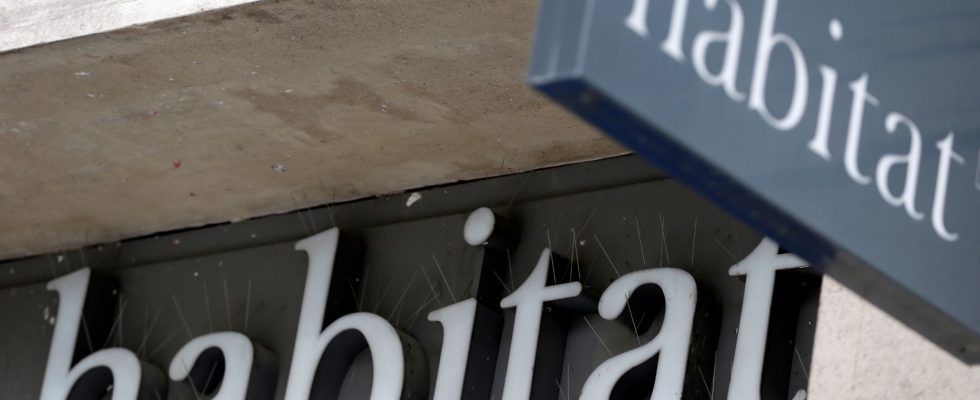When Terence Conran opened the first Habitat store in London in 1964, the mission he set for himself was clear, but risky: to democratize design among the general public. Success quickly reared its head and the brand managed to install its furniture and decorative objects in French living rooms in 1973. Sixty years later, water flowed under the bridges of the Thames and the Seine. Habitat piled up difficulties that proved insurmountable. On December 28, the Bobigny commercial court ordered the British chain in France to be liquidated.
This fall illustrates the pitfalls encountered in recent years by the mid-range. Whether in furniture or clothing, brands offering good quality products at an affordable price are struggling to find their place between low cost and premium. The inflationary period that we have experienced since 2022 has accelerated the phenomenon. “This is what we call the hourglass effect, which always comes back when there are purchasing power difficulties,” explains Pascale Hébel, economist and associate director of the consulting company C-Ways. Customers are are diverting from the mid-range. And because it is necessary to offer products at lower prices, innovative distribution models are emerging.”
A customer benefit not always obvious
There is no shortage of examples: the Irish Primark, the Dutch Action, or more recently the Chinese Shein, have exploded in France by charging ultra-competitive prices. “The consumer benefit of low price and premium is obvious. With the mid-range, there is always a doubt: it is more expensive than the low-end, and it does not always have the characteristics of the high-end “, summarizes economist Philippe Moati, co-founder of the Society & Consumption Observatory.
Clothing has particularly suffered. Pimkie, Camaïeu, Gap France, San Marina… We can no longer count the brands in this segment that have bitten the dust. In furniture, the crisis looms. At the end of Covid, the French nevertheless flocked to coffee tables and trinkets. But the explosion in the price of raw materials quickly disillusioned the sector, which is now slowing down. “Inflation in all consumer goods, which leads to arbitrage among consumers, has also had its impact. Either people stop buying, as shown by the current extremely high savings levels. Or they move downmarket” , says Cathy Dufour, general director of the professional organization French Furniture. If the Banque de France predicts that purchasing power will improve in 2024, the mid-range should not benefit. “The trend in spending is very unfavorable for households: the weight of real estate is very heavy, while that of forced purchases is increasing. There is less and less room for maneuver,” notes Flavien Neuvy, director of the Cetelem Observatory.
The second hand in ambush
The intermediate segment was also crushed by the explosion of the second hand. “For a long time, the brands did not believe in it, and it is perhaps a little late to start. They observed this market with a lot of skepticism, which has become considerably structured in the meantime,” continues the Economist. From now on, almost all clothing brands have their own second life platform, in the hope of grabbing some market share from the giant Vinted. In furniture, the situation is different. “It’s very complicated for us: we often have to repackage the product and this adds very significant logistics and labor costs,” explains Cathy Dufour, from French Furniture.
To hope to survive, brands no longer have a choice: they must stand out from the crowd. “Mid-range players have made the average consumer their target. This still exists, because there are still major fashion effects. But this is less and less true. We have entered the era of precision commerce. If you try to attract everyone, you are not going to attract anyone,” warns Philippe Moati. Véronique Pauwels, associate professor at the IESEG School of Management, agrees: “There is no longer a typical consumer. The driving force behind purchasing today is the pleasure of finding an original product that is a little broken. codes. Mid-range brands must integrate it and focus on differentiation, offering real added value compared to low prices or a premium offer.” At the risk of changing the concept, and investing massively in this transformation. Will the most financially fragile have the time? The year ahead is likely to resemble the previous one, with its ever-increasing procession of bankruptcies.
.
